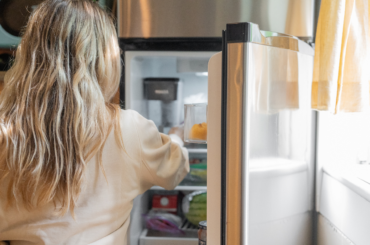Many public school districts give time off for the Jewish High Holidays (to your child’s delight), but the meaning of these important holidays is so much deeper and richer than a day off from school. There are many traditions tied to Rosh Hashanah, but you might not know how to explain its importance and history in a kid-friendly way. Here are some ways to help you to talk about what this holiday means with your family, no matter your background.
What is Rosh Hashanah?
In Judaism, the first of the Jewish High Holidays is Rosh Hashanah. Rosh Hashanah is the Jewish New Year – in Hebrew, it literally translates to “Head of the New Year.” It’s a joyous celebration of love and happiness that embraces the concept of sweetness to mark the fresh start of a new year.
Did you know that it is one of the most important holidays in the Jewish religion?
While Hanukkah seemingly gets more attention, Rosh Hashanah, Yom Kippur and Passover are considered the three most important holidays in Judaism. These are all known as part of the Jewish High Holidays, which are considered a period of intense reflection and spirituality that mark the peak of the Jewish calendar.
Why is food such an important part of the traditions of Rosh Hashanah?
Symbolic foods like crunchy sweet apples and pomegranate seeds, sticky honey and soft round challah are eaten to wish observers a “sweet New Year.” Each food is purposefully chosen and has an accompanying blessing, or wish for the new year, that goes along with it. For example, the round challah symbolizes the desire to have a full and complete year ahead.
How can you celebrate Rosh Hashanah?
From toddlers to tweens, there are plenty of age-appropriate ways to mark the start of the Jewish New Year:
- Toddlers and preschoolers: Make apple-printed greeting cards or honey-scented playdough, or learn a fun singalong song about apples and honey!
- Grade-schoolers: Braid and bake a round challah together, or craft a shofar (a Jewish ritual instrument usually made from a ram’s horn) that you can actually blow.
- Tweens and teens: At this age it’s much easier to grasp the deeper meaning behind the traditions of the holiday. Have your older child help you put together the menu, prep the food and cook the family meal. Check out PJ Library’s Recipes for the High Holidays for some delicious ideas.
Here are a few more facts about Rosh Hashanah you might not know:
- The traditional Rosh Hashanah greeting in Hebrew is “shanah tovah,” which translates directly to “good year.”
- Rosh Hashanah is celebrated as a two-day holiday all over the world.
- The Shofar is blown on both days of Rosh Hashanah. The sound is a call for repentance for all observers, and is blown up to 100 times.
- However, if the holiday falls on Shabbat (the weekly day of rest and worship), blowing the Shofar is forbidden.
- It is customary to eat from the head of a fish on Rosh Hashanah, symbolizing the wish to be “a head and not a tail.”
And for even more fun family activities to engage your kids and keep the holiday spirit going, check out this roundup of crafty, creative activities for the Jewish New Year!







